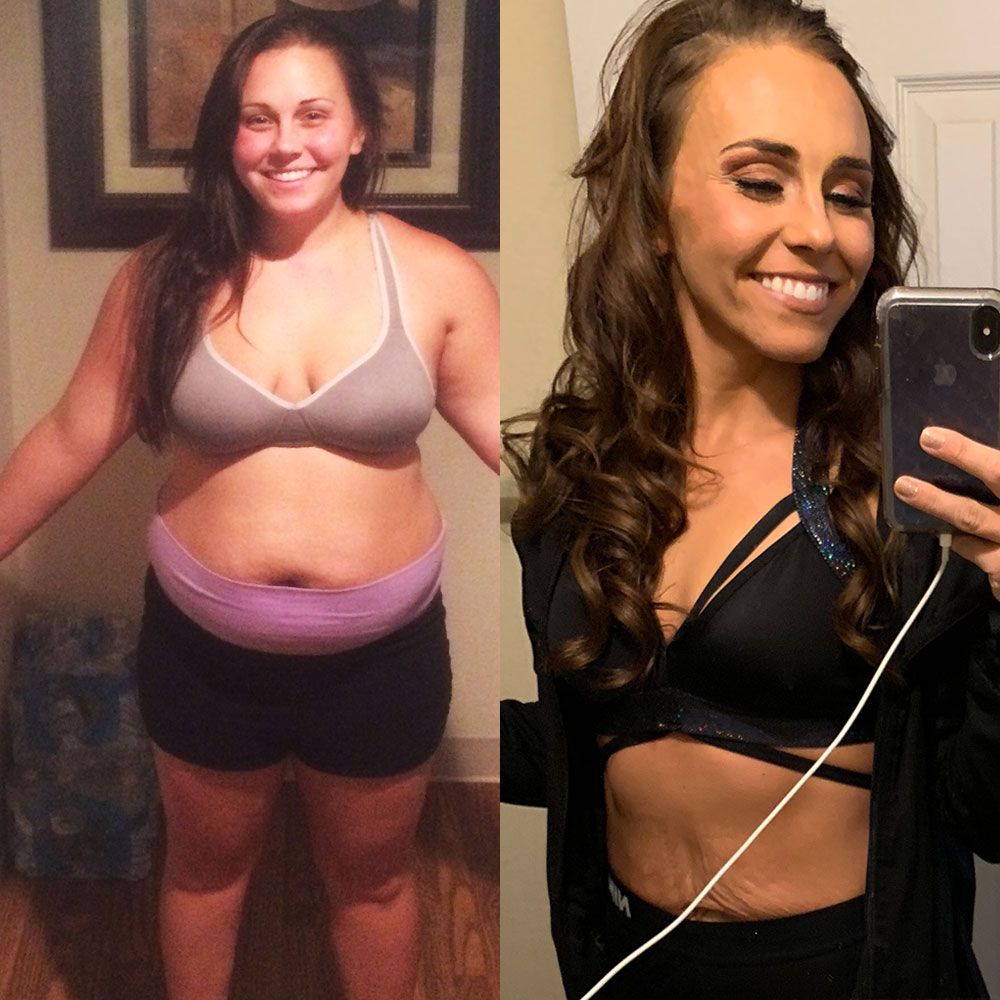
Intermittent fasting is officially the diet of the moment. Celebs like Jenna Jameson, Vanessa Hudgens, and Halle Berry all swear by it, and with tons of people pairing it with keto eating plans, it’s likely you know someone who’s doing it.
In case you’re unfamiliar, intermittent fasting (IF) is a type of eating plan that calls for periods of eating and fasting (in which you can only consume water, coffee, and tea). During the time periods you can eat, you can generally eat what you like, which is why the plan works for a lot of people. It’s simple, and you can tweak the schedule to fit your needs.
That being said, IF is definitely NOT for everyone. As WH previously reported, intermittent fasting can be a tough diet to follow if you’re the type who likes to snack and feels like you’re starving when you can’t. It’s also not a good idea for anyone with a history of disordered eating.

Still, it can be worth trying for people who want to lose weight and are able to make the fasting work with their lifestyles. Luckily, there are tons of different fasting schedules you can follow, so you can experiment with which schedule is the best fit for you, says nutritionist Amanda Baker Lemein, RD, who is also a WH advisor.
Of course, this begs the question: Is there one intermittent fasting schedule that’s best for weight loss? Here are six popular IF approaches you’ll come across online and on social media that people tend to follow for weight loss purposes—and exactly what the current research says (if any exists!) about the potential benefits for each one.
1. The 16:8 diet
The 16:8 method of intermittent fasting involves fasting every day for 16 hours and restricting your daily eating window to eight hours. For most people, this schedule means not eating anything after dinner and skipping breakfast. You might eat between, say, noon and 8 p.m.
As far as how the 16:8 method fares for weight loss? It could work, the (very limited) research shows. In a recent (albeit small) study published in the journal Nutrition and Healthy Aging, 23 obese men and women followed the 16:8 diet for 12 weeks. Compared to a group that had eaten normally and not within a set timeframe, those on the 16:8 diet took in 350 fewer calories per day, lost a modest amount of weight (about 3 percent of their body weight on average), and lowered their blood pressure. Still, it’s important to note that this was a small study, and few others have examined the 16:8 diet specifically, so it’s tough to say that following the 16:8 diet is a surefire way to shed excess weight.

Interestingly, following this kind of eating plan may help with appetite control (counterintuitive, no?). A recent study in the journal Obesity showed that people who ate only during a six-hour window, compared to following a normal eating schedule, felt less hungry than the control group, even though both groups ate the same amount of calories.
2. The 5:2 method
To follow the 5:2 diet, you eat normally five days a week and cut back to 20 percent of your normal daily calorie intake for the other two. Women are supposed to have about 500 calories on “fasting” days, while men have about 600.
This IF method resulted in more weight and fat loss compared to day-to-day calorie restriction in a 2017 study in the International Journal of Obesity. Again, research on humans is limited, so it’s tough to draw major conclusions from one promising study.
3. Alternate-day fasting
As the name implies, this diet involves fasting every other day. There are several different versions of this plan, with some of them allowing about 500 calories on the fasting days, and some encouraging that you eat even fewer or close to zero calories on fasting days.

Many of the existing studies on the health benefits of intermittent fasting used some version of this particular diet, though much of the weight loss-focused research hasn’t been conclusive.
4. Eat-stop-eat diet
This method of intermittent fasting involves a full fast for 24 hours once or twice a week. For example, you may eat dinner at 6 p.m. and then fast until 6 p.m. the next day, and you would do this one or two times per week—but not in a row.
There’s no research currently on this specific method of IF, but because of calorie reduction, it’s likely to result in weight loss if it’s a fasting schedule that works for you. (Of course, keep in mind that not eating for a full 24 hours can be pretty tough.)
5. The 14:10 diet
This one is similar to the 16:8 method, but involves fasting for a 14-hour window and eating for 10. It’s a little easier to stick to than 16:8 because you have a longer eating window, but it’s possibly less effective when it comes to weight loss.
Given that the fasting period is short and pretty much follows the way people already eat, it may be hard for some people to achieve a caloric deficit with this diet.
6. The Warrior Diet
This diet is way different from the rest, with the majority of eating happening at night. The Warrior Diet was coined by fitness author Ori Hofmekler. It involves eating only small portions of raw fruits and vegetables during the day, then feasting on one huge meal at night within a 4-hour eating window.
There’s no specific research on the Warrior Diet, but since the “fasting” periods still allow for some food, it may be more practical for some people. Still, the period when you can have heavier foods is very small, and the diet also involves focusing on paleo foods, so it’s stricter than other forms of IF. If you can achieve a caloric deficit on this diet, it may lead to weight loss like other IF methods.
So which intermittent fasting schedule is best for weight loss? Whichever one you’ll actually stick to, TBH.
In short, the one that’s easiest for you to follow. “It is all about sustainability for the individual,” says Lemein. “If one of these diets work well for you and your lifestyle and preferences, then you will likely see some success. If not, then you’ll likely not see the results you’re are looking for, as the sustainability piece will not be there.” That means picking a diet that work best with all the lifestyle factors you need to consider, like your work schedule, family dynamic, living situation, commute time, and travel commitments, notes Lemein.

It’s worth pointing out, though, that the 16:8 diet seems to be the most doable for a lot of people who are into IF. The 16:8 method also scores points for preventing overeating at night, which can often be a big obstacle for weight loss. And sticking to an eight-hour eating window during daylight hours allows your metabolism to run as it’s supposed to—you fuel up for energy during the day (when you’re most active), and stop eating for rest and recovery at night, per a 2017 article in the journal Nutrition Reviews.
Of course, any weight loss that you experience from IF is most likely due to the basic fact that you’re consuming less calories, not necessarily the timing of your eating, says Lemein. And you can totally eat less, and lose weight, without taking on fasting. Case in point: A meta-analysis published in the JBI Database of Systematic Reviews and Implementation Reports in 2018 found that intermittent fasting had similar weight loss results to a traditional calorie-restricted diet. So, unless fasting makes dieting easier for you, there’s really no reason to chose IF over other diets.
The bottom line: All intermittent fasting schedules may lead to weight loss if you can follow them sustainably, and the 16:8 method may be the easiest way to follow an IF diet.
Source: Read Full Article